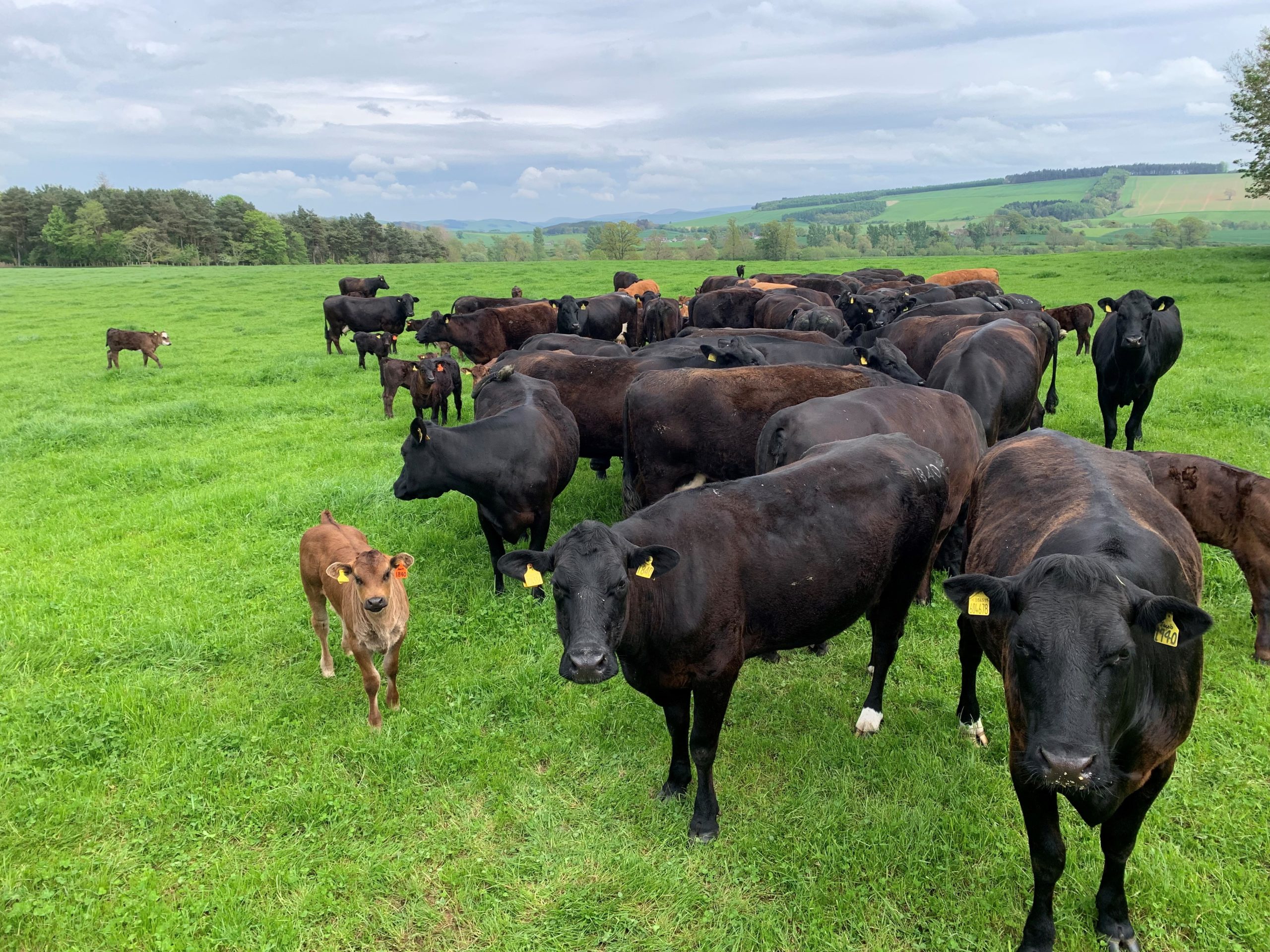Innovations in technology such as automated weighing platforms have proved a gamechanger for Scotland’s beef finishing sector, improving data collection, driving better management decisions and boosting overall performance.
This is the eighth in a series of case studies, developed as part of the 2023 RHASS Presidential Initiative (PI), exploring the science behind food and drink production, with the spotlight turning to the development and widespread adoption of the Ritchie Beef Monitor.
The automated weighing crate, complete with fitted water troughs and 3D cameras, was borne out of a multi partner collaboration between David Ritchie (Implements) Ltd, SRUC, Scotbeef, and others (Harbro, Innovent Technology Ltd, Wm Morrison Supermarkets), and allows farmers to monitor live weight and weight gains of individual cattle through compatible ear tags, every time they walk on the unit to access water.
The technology allows farmers to track optimum finishing points for individual animals, which has led to a welcome reduction in penalties for overweight cattle, whilst reducing labour needs, minimising stress for livestock and offering clear health and safety benefits.
The weighing crate was first launched four years ago and deliverers of the weighing crate, David Ritchie (Implements) Ltd, has since been working closely with farmers to further develop the technology, and this May, launched a new SMS alert system, which notifies farmers if certain cattle aren’t performing as expected, as well as when animals are ready for market.
Technology pioneers, Agri-EPI Centre, were an early adopter of the system, working with several farmers to trial the platform on the ground. CEO Dave Ross explained how the development and adoption of new technologies like Ritchie Beef Monitor are critical to improving data collection and efficiency in Scotland’s beef herds:
“Science and innovation are the engine of improvement in agricultural output and have demonstratively been that engine throughout history. There are high levels of variance between the performance of the top and bottom 10% of farmers and what is missing, is the data to inform on management decisions and to optimise performance. These technologies eliminate the guesswork, improve data collection accuracy, reduce labour pressures and enhance animal welfare on farm,” said Mr Ross.
One of the first farmers in Scotland to trial the new technology was Robert Neill of Upper Nisbet Farm in the Scottish Borders, who runs a herd of 300+ Limousin cross cows with all progeny finished on farm.
“You can’t monitor what you don’t measure, so for us, this was an opportunity to capture data, particularly daily live weight gains, to make sure the nutrition we were using was doing the job correctly and to help us get to the target weight for fattening.”
Sharing his thoughts on the important role of science and technology, he added: “These technologies are helping us to be more efficient, but they are also a draw for the next generation who want to be working with the latest gadgets and seeing progress in the sector. I see this first-hand working with my two sons on the farm, so if we can streamline these technologies to make them more reliable and workable, it is a no-brainer for farming.”
Ian Duncan Miller of the RHASS Presidential Initiative added: “The Ritchie Beef Monitor developed in conjunction with Agri-Epi Centre and others, is an excellent working example of the essential link between basic research and innovation and the supply chain in agriculture. We are delighted that our RHASS Presidential Initiative has been able to shine a light on some of these examples, particularly as our sector comes under pressure from both economic and environmental pressures and demonstrates the need to continually invest in science and research to be prepared for these challenges.”
The RHASS Presidents’ Initiative will culminate with a showcase at the Royal Highland Show, bringing together different sectors and stories from over the past months and creating a legacy of materials which will be made available for anyone to access

